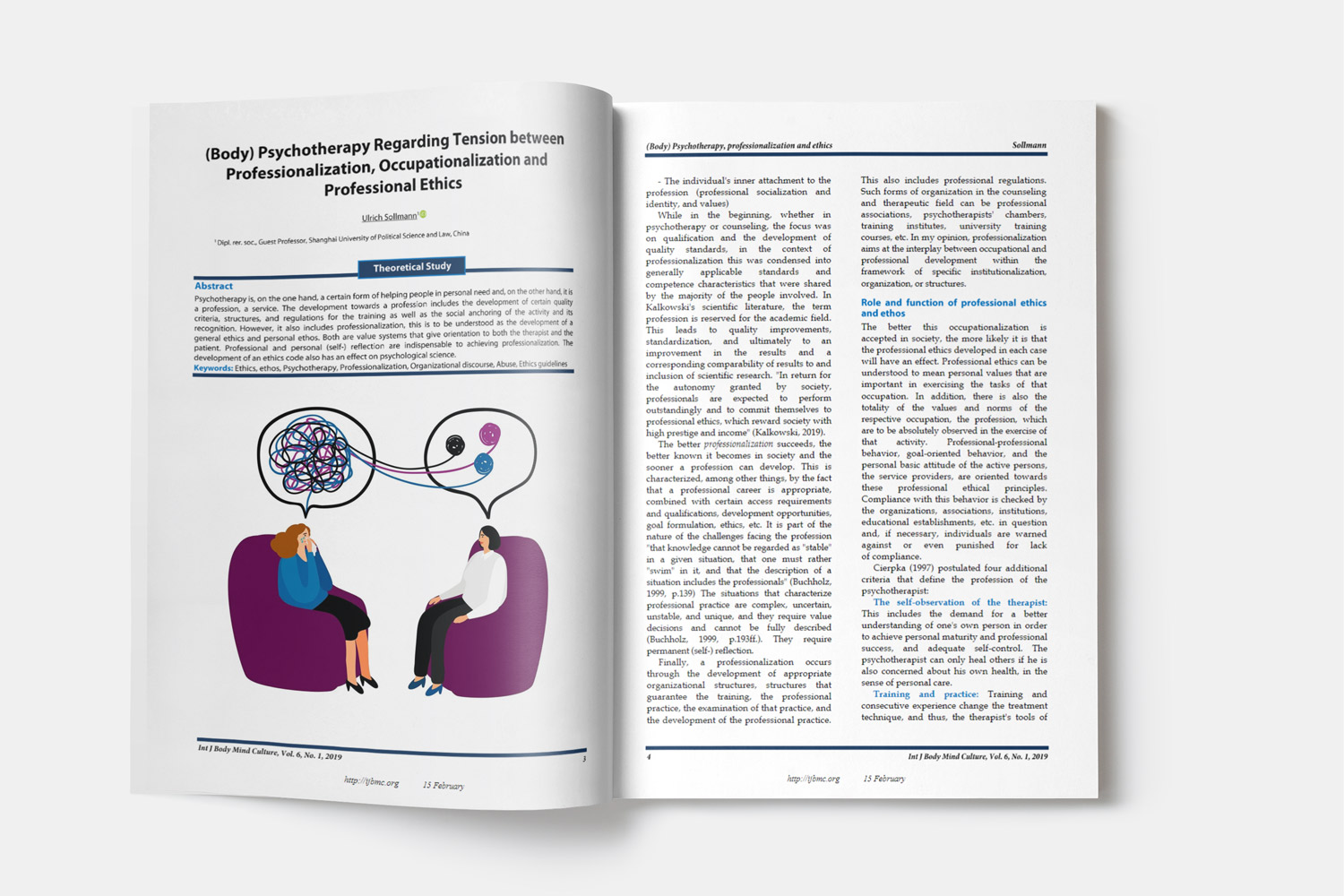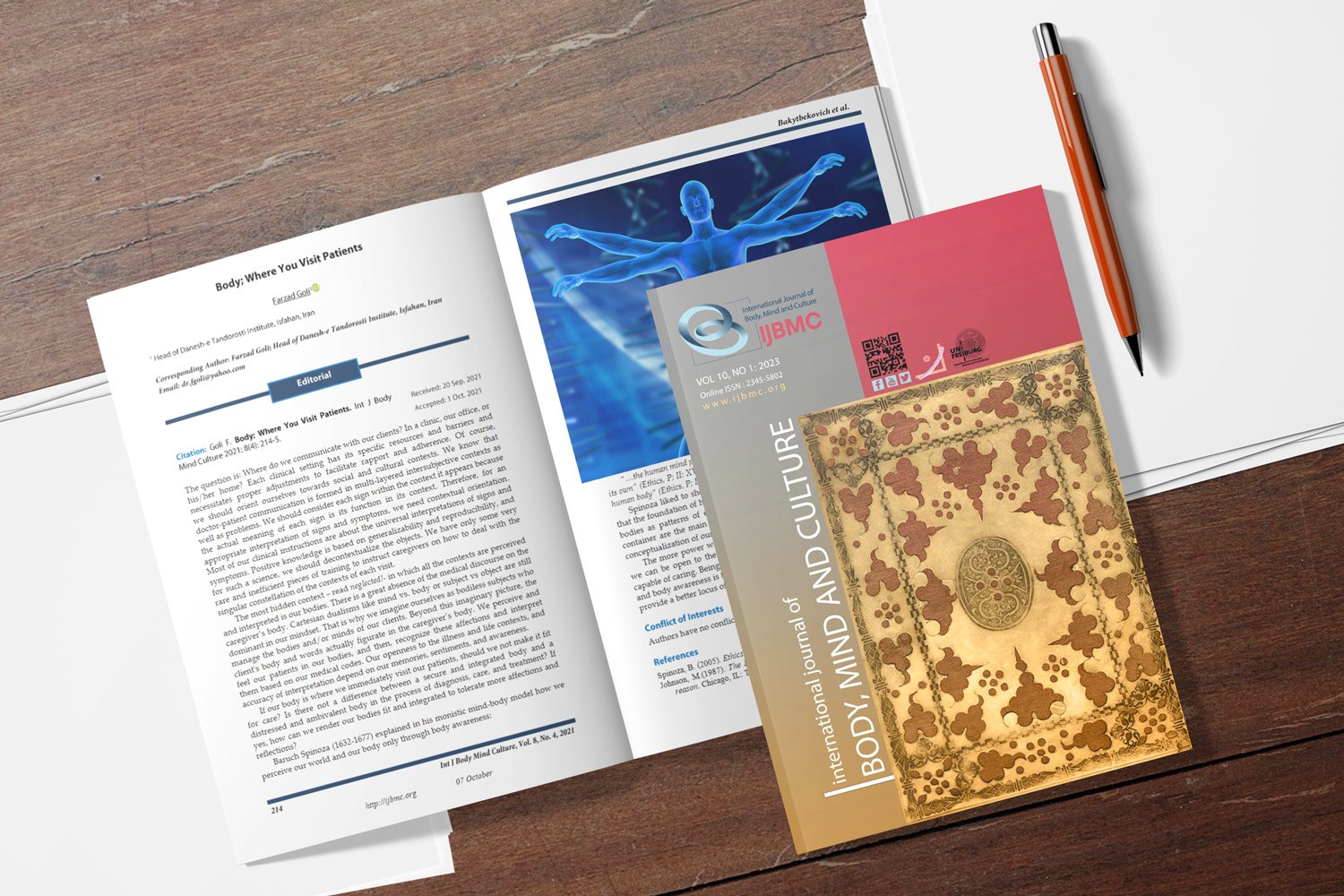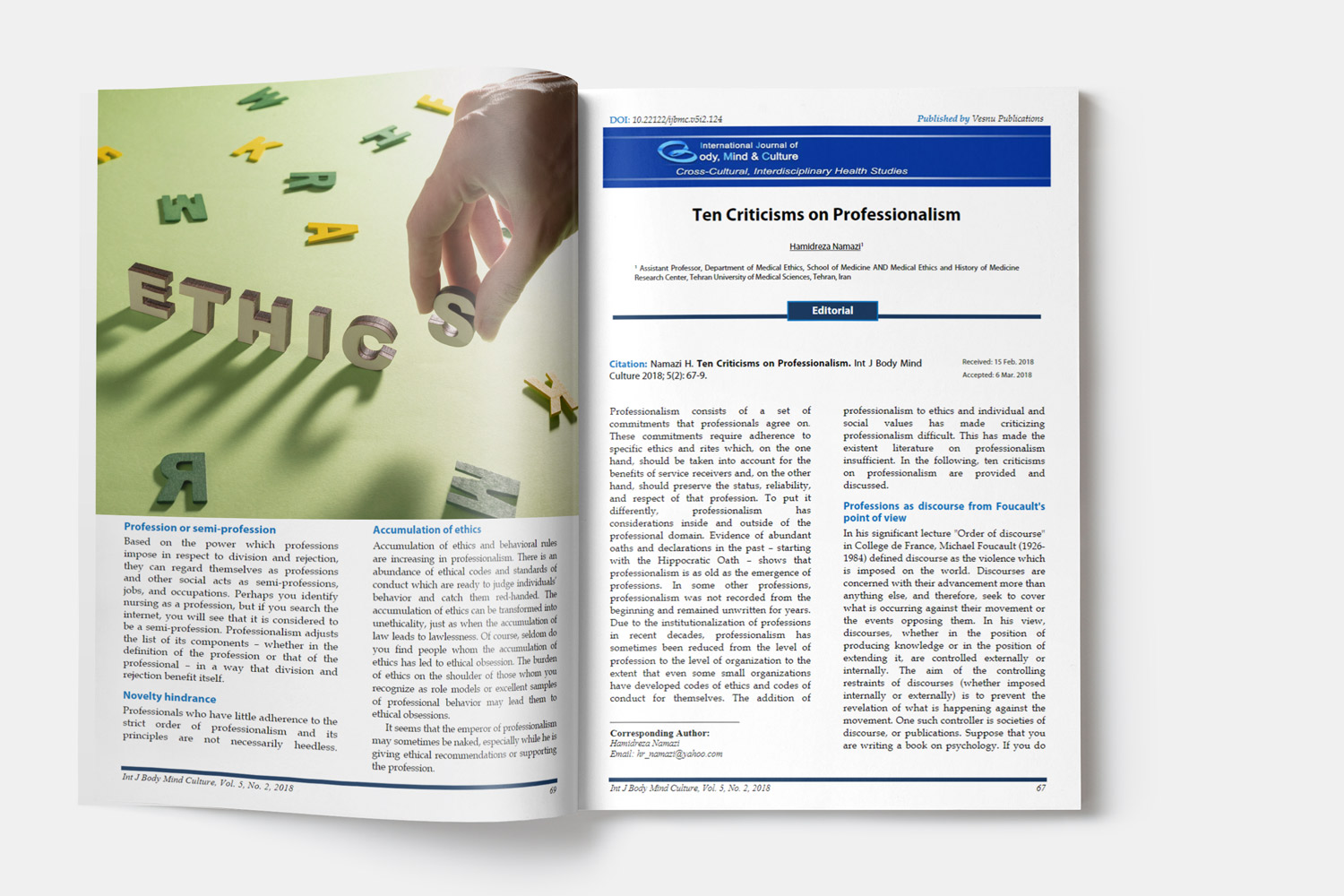Body-to-Body-Communication and Somatoform Disorder in China: A Case Study Regarding Culture and Gender
Downloads
Somatoform disorder and somatic symptom disorder (SSD) are resistant to traditional medical support. Patients experience a vicious cycle of focused awareness/attention towards distressing bodily sensations. A negative interpretation of these phenomena leads to “worrying, cognitive styles” concerning the body (body-image, which enhances further self-awareness/self-observation) towards unpleasant bodily sensations and hyper-arousal. Body-psychotherapy may be one approach appropriate in dealing with these disorders and syndromes. This article addresses the concept of creative body-work, defines its basic guidelines and aims, and demonstrates a practical approach to support patient familiarization with body-self-experience and how to establish a basic contact (relationship) and control the vicious negative cycle. A positive working definition of somatoform disorder would include the following: illness perception and illness attribution; illness behaviour; health-related anxiety; emotional distress; disability; quality of life; doctor-patient-interaction and health care utilisation. This article relates to specific cultural aspects working with patients in China within a one-day professional workshop including clinical observations and analysis. It also refers to the gender perspective. Psychotherapy and psychosomatics more and more also have to consider these perspectives.
Downloads
American Psychiatric Association. (2013). Somatic Symptom and Related Disorders. Diagnostic and Statistical Manual of Mental Disorders (5th ed.). Washington, DC: APA.
Ciompi, L. (1998). Affect-logic [Thory].
Fritzsche, K. (2015). Patients with somatoform disorders-New trends in diagnostics and treatment [Lecture]. Wuhan, China.
Loew, T. H., Tritt, K., Lahmann, C., & Rohricht, F. (2006). Korperpsychotherapien–wissenschaftlich begründet? EineUbersicht überempirisch evaluierte Korperpsycho-therapieverfahren. Psychodynamische Psychotherapie, 5, 6-19.
Lowen, A. (1975). Bioenergetics. New York, NY: Penguin.
Marlock, G., & Weiss, H. (2006). Handbuch der Korperpsychotherapie. Stuttgart, Germay: Schattauer Verlag.
Nilges, P. (2009) Das Akzeptanz-Prinzip in der Schmerztherapie. Vortrag 1. Bayrischer Schmerzkongress Dachau.
Rohricht, F. (2009). Body oriented psychotherapy. The state of the art in empirical research and evidence-based practice: A clinical perspective. Body, Movement and Dance in Psychotherapy, 4(2), 135-156.
Rohricht, F., & Elanjithara, T. (2014). Management of medically unexplained symptoms: outcomes of a specialist liaison clinic. Psychiatr.Bull (2014), 38(3), 102-107. doi:10.1192/pb.bp.112.040733 [doi]. Retrieved from PM:25237518
RÙhricht, F., Papadopoulos, N. (2011a) Manual for Group Body Psychotherapy in Somatoform Disorder and medically unexplained syndromes (BPT-SD/MUS). [Unpublished Manuscript].
Rohricht. (2011b). Methodenkritische Zusammenfassung zur stِrungsspezifischen KPT der somatoformen Strung. In F. Rohricht (Ed.), Sturung sspezifische Konzepte in der Korperpsychotherapie (pp. 232-240). Giessen, Germany: Psychosozial-Verlag.
Rohricht, F. (2011c). Das theoretische Modell und die therapeutischen Prinzipien/Mechanismen einer integrativen Körperpsychotherapie (KPT) bei somatoformen Störunge. Psychotherapie-Wissenschaft, 1(1), 5-13
Schroder, A., Rehfeld, E., Ornbol, E., Sharpe, M., Licht, R. W., & Fink, P. (2012). Cognitive-behavioural group treatment for a range of functional somatic syndromes: randomised trial. Br.J Psychiatry., 200(6), 499-507. doi:bjp.bp.111.098681 [pii];10.1192/bjp.bp. 111.098681 [doi]. Retrieved from PM:22539780
Schaefert, R. et al, (2015) Specific cognitive-interpersonal group therapy for patients with SSD/BDD in Chinese primary care. Treatment manual, training and supervision. Concept for a training and research program "Multiple distressing somatic symptoms in China and Germany. [Unpublished].
Schaefert, R., Kaufmann, C., Wild, B., Schellberg, D., Boelter, R., Faber, R. et al. (2013). Specific collaborative group intervention for patients with medically unexplained symptoms in general practice: a cluster randomized controlled trial. Psychother. Psychosom., 82(2), 106-119. doi:000343652 [pii];10.1159/000343652 [doi]. Retrieved from PM:23295775
Sollmann, U. (1988). Bioenergetik in der Praxis. Reinbek,Germany: Rowohlt Verlag.
Sollmann, U. (1999). Management by Korper. Reinbeck, Germany: Rowohlt-Verlag.
Sollmann, U. (2011). Treatment of Psychosomatic Disorders in Bioenergetic Analysis. In U. Sollmann (Ed.), Handbook Bioenergetic Analysis (pp. 363-368). Gissen, Germany: Psychosozial Verlag.
Copyright (c) 2017 International Journal of Body, Mind and Culture

This work is licensed under a Creative Commons Attribution-NonCommercial 4.0 International License.















